What are jumpers or rebound boots?
Behind this new type of athletic footwear lies a whole world of possibilities, benefits and considerations related to a way of training like you've never experienced before. Fun and joint protection will be the main drivers that will allow you to do things you may have given up, and reach levels you may never have dared to dream of.
Jumpers are an athletic shoe adapted to exercise without impact on the joints. To a certain extent it is like jumping on a trampoline, but with freedom of movement. This freedom allows us to do almost any activity that can be done with conventional trainers: walking, running, dancing, jumping, bouncing, etc.
Behind this new type of sports footwear lies a whole world of possibilities, benefits and considerations related to a way of training like you've never experienced before. Fun and protection of your joints will be the main drivers that will allow you to do things you may have given up, and reach levels you may never have dared to dream of.
Let's discover jumpers and see what are the most important points to keep in mind when we talk about them.

How rebound shoes work
Jumping is one of the most fun things for human beings, from childhood to old age, jumping is associated with joy. It gives us well-being, euphoria and a high. That is why, throughout history, a multitude of equipment has been created to make jumping fun. From trampolines to today's mega jumping parks, through inventions such as pogo sticks and even shoes with springs, among others.
In this world of jumping inventions, we find jumpers. Curiously, they were born with a very different function to the sporting one they have ended up having.1 What we can consider as the first prototype is a jumping shoe that was created for use in plays. It dates from 1914, but it already featured the system of opposing bows that today's jumpers include.
Find out more about the history of rebound shoes >>>
Precisely these two opposing bows are the most important parts of what we consider to be the "heart of jumpers". We are talking about the rebound system or RS (Rebound System). The rebound system is precisely where all the magic happens, where the vast majority of the technical improvements developed over the years have been concentrated. The boot that attaches to the rebound system is very similar to a conventional skate or ski boot (we are sure that, if you are new to this, you have called them skates in one way or another: platform skates, jumping skates...).
THE REBOUND SYSTEM, THE HEART OF THE JUMPERS
Como decíamos, el sistema de rebote o RS es la pieza (o conjunto de piezas, más exactamente) que más ha evolucionado a lo largo de los años, porque de él dependen las principales funciones y beneficios que podemos obtener con las jumpers: absorción del impacto, progresividad del salto, estabilidad y seguridad.
El funcionamiento del sistema de rebote es muy fácil de observar cuando vemos a alguien hacer deporte con jumpers. Los arcos se aplanan y la multibanda (el tensor que los une) se estira por la acción de nuestro peso y las fuerzas aplicadas. Después, el sistema se restituye, los arcos recuperan su forma y la multibanda se destensa. Entonces se produce de nuevo lo que llamamos “vuelo”, que es el tiempo en que la jumper no está en contacto con el suelo.2
As we said, the rebound system or RS is the part (or set of parts, more precisely) that has evolved the most over the years, because the main functions and benefits that we can obtain with jumpers depend on it: impact absorption, progressiveness of the jump, stability and safety.
The functioning of the rebound system is very easy to observe when we see someone doing sport with jumpers. The bows are flattened and the multiband (the tensor that connects them) is stretched by the action of our weight and the forces applied. Afterwards, the system is restored, the arcs regain their shape and the multiband is unstretched. Then what we call "flight" takes place again, which is the time when the jumper is not in contact with the ground.2
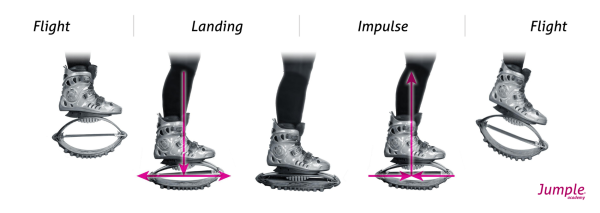
In a very summarised way we could say that the operation of the jumpers or rebound boots is based on the flattening and recovery of the opposite arcs, and the tension and distension of the multiband, which works as a union between the arcs and helps the recovery of the system. And so the two main (and most fun) phenomena of exercising with jumpers occur. As the system flattens out, it absorbs the impact. As it recovers its shape, it propels us with all the accumulated force. The sensation is unique.
Of course, the rebound system is also made up of other parts, designed to fulfil other functions without which it would not be possible to jump with jumpers.3 If we go from the bottom to the top, we find the sole first. It is the part that is in direct contact with the ground. In this sense, its most important function is to contribute to stability and to ensure grip. In the case of the Aerower Jumper1, we can jump on any terrain, even wet! It is also important, therefore, the protection they provide: both to our jumpers from the ground, and to the ground of our jumps when we train indoors.
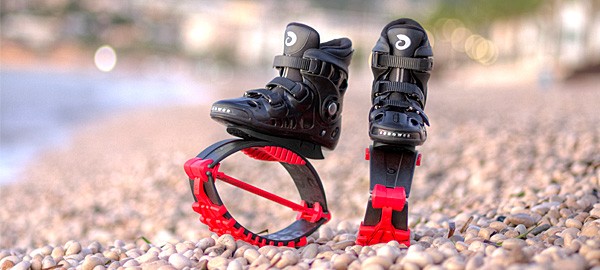
The last piece that completes the rebound system of the Jumper1 is the bumper. It is the smallest part of the RS, located on the inside of the upper arc. It ensures that our joints are protected from impact even on the most extreme jumps, because it prevents the parts from colliding with each other and protects them in the process.
The operation of jumpers of course includes a number of technical implications for the component parts. Depending on each part, each material used must be of the highest quality in terms of elasticity, strength, grip, softness or comfort. And each part must respond to a design that makes it the most efficient part to perform. All this gives rise to a series of technical considerations that we explain below and that we must take into account when choosing the most suitable jumper or rebound boot.
What jumpers are for
If we could only use three words to define what jumpers are for, they would be: motivation, protection, results. It is very likely that, if you read on and try them out, you will end up thinking the same thing.
Generally speaking, as we have already said, they can be used more or less like a conventional running shoe. This is one of the main advantages compared to other rebound equipment such as trampolines: freedom of movement. Therefore, they can be used for walking, dancing, jumping, jogging, etc.
But if they can be used to do practically the same things as trainers, why would we choose jumpers for exercise? What extra value do they give us in comparison? The most important differentiating value is, logically, impact absorption, which is up to 80% when the RS is perfectly configured.4
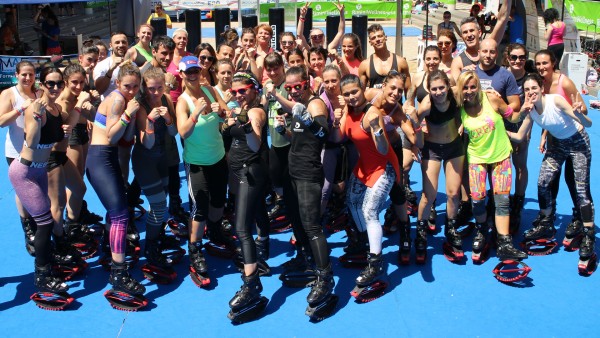
This is great news for people with joint problems. Because of the protection provided by the RS, almost anyone can use the Jumper1, from children to seniors, from the very unfit to professional athletes.
We love to say "there's a Jumper1 for everyone", because we can customise and adapt them to us and get the most out of them. This is precisely thanks to the great versatility of the jumpers and the wide variety of activities we can practice with them. The first allows us to adapt the Jumper1 to each user with great precision and the second allows us to find those exercises that are most beneficial for each user.
In order to ensure that exercise with jumpers is practised in the best possible way, Aerower created the Jumple Academy. It is the institution in charge of developing training programmes with jumpers according to the latest trends and research.
See training programmes with jumpers
There are also people who simply use jumpers for walking or jogging without necessarily having a training plan in place. For them, Jumple Academy has put together the main recommendations and precautions so that they too can get the best results from their jumpers.
See recommendations for the use of jumpers

Finally, as we have already mentioned, jumpers also offer great results for high-performance5 or professional athletes. It is very interesting, for example, to be able to talk about "shock-absorbing plyometrics with jumpers". Recent studies6-9 have shown that the use of impact-reducing elements such as jumpers, despite adaptations, also provides benefits associated10 with high-intensity plyometrics. The characteristics and ability of jumpers to adapt to each athlete allow us to perform plyometric exercises in all their forms (low, medium or high intensity),11-13 as regular footwear or as an occasional complement.
Let's get down to business, what do I get out of jumpers? What are the benefits I can get from using them for training?
First, there is a small parenthesis that we feel it is important to mention: why do we say "exercise with jumpers" and not "rebound exercise" like other brands in the industry? If this question is not important to you, you can skip the clarification without any problem, go to "End of parenthesis".
We talk about the benefits of exercise with jumpers and not rebound exercise to avoid confusion. The term "rebound exercise" was created in the 1970s by Albert A. Carter,14 in application to trampolines and referring to very specific practices. When the first modern jumpers or rebounding boots were marketed in the 1990s, the brands of the time put jumpers under the umbrella of rebounding exercise. But not because they were used to perform the same exercises that Carter had proposed with trampolines, but in order to be able to attribute to jumpers the "33 ways in which rebounding exercise affects your body",15 that is to say, the benefits enunciated by Carter for his proposal.

As a result, the term "rebounding exercise" is now used to encompass any form of exercise on trampolines or jumpers. And many programmes with jumpers, regardless of their methodology, still proclaim these benefits.
At Aerower and Jumple Academy, we prefer to use the term " exercise with jumpers" to encompass the many and varied practices that can be performed with this type of footwear, while avoiding limiting them or confusing them with other forms of exercise or the use of other types of equipment.
(end of parenthesis)GENERAL BENEFITS:
Now let's look at what benefits have been proven in specific studies with jumpers::
1. The whole body benefits to the same extent from the perceived increase in gravitational-inertial force.
2. Musculoskeletal system.
- Repeated contractions during jumping improve muscle tone, which strengthens muscles, tendons and ligaments.
- Continuous cushioned impacts promote calcium binding and increase bone mineral density.
- The repeated jumping motion stimulates muscle tissue and improves oxidative stress levels in our cells.
3. Body composition. The continuous and intense strength work performed with jumpers (due to the extra load they entail) causes:
- Increase in lean mass (muscle).
- Reduction of fat mass (adipose tissue).
- Increased metabolism, which remains elevated for hours after training.
4. Circulatory system and heart muscle. Repeated muscle contractions:
- Encourage venous return and prevent pooling caused by the action of gravity.16
- They regulate blood pressure.
- They increase the production of red blood cells in the bones, due to the continuous cushioned impacts.
5. Respiratory system. Due to the positive effects on the circulatory and muscular systems, the following occurs:
- Improved aerobic capacity and increases VO2 max.
- Increased exercise tolerance (even in untrained people).
6. Lymphatic system. Repeated contractions stimulate its anti-gravitational circulation.
7. The functioning of the digestive system improves as the repetitive jumps facilitate its motility (movement).
8. Increase in coordination and physical capacities, which are the objective of each programme.
9. Better body control and balance due to the constant activation of the proprioceptive mechanisms due to the change in posture (CDG and BDS).
10. Facilitates neuromuscular coordination because the CEA is activated with every jump.17
11. Injury prevention. Thanks to the cushioning of up to 80% that prevents the immediate and long-term effects of repetitive impacts that are transmitted to the different joints and cause wear and tear.
12. Increased general well-being. The feeling of weightlessness or buoyancy reduces stress and anxiety levels.
13. The most obvious for anyone who has been to a Jumple class: exceptional levels of fun and motivation! #AerowerAttitude
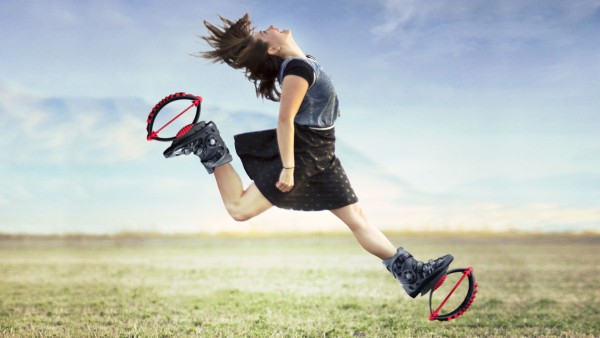
SPECIFIC BENEFITS:
But these are not the only ones! All these are the general benefits we get from using jumpers. However, with each type of training you do with them, you will be adding other, so-called specific benefits. For example, each Jumple Academy programme works towards certain goals, which translate into certain benefits. These are the benefits of the latest jumper training programme launched:
1. Look better. Body composition.
- The high intensity peaks will lead to a reduction in body fat percentage (fat mass) and an increase in muscle tone and muscle mass (lean).
2. Feel more capable. Improved physical abilities to cope with Jumple classes and daily life.
- Muscular endurance, maximum strength and power, due to the work of high intensity series.
- Aerobic and anaerobic cardiovascular endurance, through intermittent training.
- Mobility and flexibility for the steps of the choreographies, through warm-up work and stretching.
- Speed in the movements to execute them in their full range of motion, by improving strength.
3. Sentirse más hábiles. Desarrollo de capacidades coordinativas para ejecutar habilidades básicas y especiales con y sin jumpers.
- Equilibrio estático y dinámico.
- Coordinación general y específica para realizar movimientos globales, desplazamientos, giros, etc.
- Agilidad para ejecutar tareas que exigen cierta destreza o técnica.
- Ritmo y expresión corporal.
- Retención y memoria coreográfica.
4. Sentirse mejor. Mejora en los niveles de estrés, relajación, sueño y aspectos relacionados con el bienestar general.
- Debido al trabajo de alta intensidad y la sensación de ingravidez que proporcionan las jumpers.
5. Superarse. Progresión constante.
- Metodología de trabajo apropiada y adaptable de Jumple Evolution permite que se obtengan mejoras independientemente del nivel de los participantes.
- Evolución continua, gracias a un Plan de Entrenamiento adecuado. Los progresos en el alumnado aumentarán su adherencia a las clases Jumple.
- Instructores motivadores que sacan lo mejor de cada participante en una clase Jumple.
3. Feeling more skilful. Development of coordination skills to execute basic and special skills with and without jumpers.
- Static and dynamic balance.
- General and specific coordination to perform global movements, displacements, turns, etc.
- Agility to perform tasks that require certain dexterity or technique.
- Rhythm and body expression.
- Choreographic memory and retention.
4. Feeling better. Improvement in stress levels, relaxation, sleep and aspects related to general well-being.
- Due to the high intensity work and the feeling of weightlessness provided by the jumpers.
5. To surpass yourself. Constant progression.
- Jumple Evolution's appropriate and adaptable work methodology allows improvements to be achieved regardless of the level of the participants.
- Continuous evolution, thanks to an appropriate Training Plan. Progress in students will increase their adherence to Jumple classes.
- Motivating instructors who bring out the best in each participant in a Jumple class.
6. Train with confidence. Safe and effective classes.
- Good technical teaching with the jumpers as part of a structured and coherent Training Plan.
- Caution in the use of jumpers and risks of the activity: PAR-Q, medical consent, prepared instructors, good methodology, appropriate exercises, etc.
7. Laugh and smile. Motivational elements of the classes.
- The programme is applied in dynamic and highly motivating classes, due to the variety of choreographies, the role of music, the work of the instructor and the beneficial influence of physical activity with jumpers.

What to consider when exercising with jumpers
When exercising with jumpers, there are two things to keep in mind: safe equipment and safe practice. The importance of safe equipment and safe practice is greater than in other disciplines, not because they are difficult to achieve, but because of the problems that can arise from not doing things right.
On the one hand, the jumpers we use must have a minimum quality and minimum functionality. We must guarantee, for example, the stability of the jumps, that these are produced in a natural and progressive way, or that our jumpers are as adjusted as possible to our weight and size. This is the only way we can fully enjoy the incredible feeling of bounce and jump that good jumpers give us, forget about unnecessary problems and be sure that with each jump we are closer to our goals.
In this sense, the Aerower Jumper1 was a great qualitative leap in the history of rebound shoes. Probably its most striking feature is the great versatility of a single model, which brings together all sizes (from 33 EU/ 2 USM to 45 EU/ 11 USM) and is adaptable for all weights (from children of 20 kg to adults of more than 180 kg). This is possible thanks to the fact that all boot sizes are compatible with all RS hardnesses, which are precisely adapted to each user thanks to the 4 types of arches (Soft, Light, Hard and Xtra Hard) and the multiband (1 single piece adapts to 9 intensities).
The total number of innovative technologies and systems provided by the Aerower Jumper1 exceeds ten. Among their most important functions are: prevention of accidental disassembly, anti-collapse and anti-shock protection of the parts or manual assembly.
I want to know more about what makes the Jumper1 unique

The best quality, of course, is achieved from the very first moment, from the manufacturing, and even before that, from the selection of materials. In the case of the Aerower Jumper1, the renewed selection of materials allows us, for example, to jump on any surface, or to have a 2-year guarantee on all components, the longest in the sector. In addition, they are the only ones manufactured in Europe and tested in the factory piece by piece, which allows us to remove all those parts that could potentially cause problems.
All this makes the Aerower Jumper1 the safest and most durable in the industry, the most advanced ever created, a mighty evolutionary leap. They are unbeatable when it comes to offering the most fun and beneficial jumps to each and every one of us.
Once we've made sure we have the safest and best performing equipment, it's time to know how to use it in the best way. Knowing which are the safest and most suitable practices for each objective allows us to get the most out of each of our jumps.
In order to get the most out of jumpers, the professionals at the Jumple Academy have conducted an exhaustive review of all the specific studies carried out to date and have launched their own research. Likewise, the Academy remains attentive to all trends and developments in fitness and sports training.
As a result, today, an official Jumple certificate is the ultimate guarantee that a professional has the best knowledge and skills to help each of its students achieve success with jumpers.
Why is that? The answer is simple and complicated at the same time: because everything is based on biomechanics (how the use of jumpers affects our body). From this, Jumple Academy develops all its programmes, trainings, exercises, tips, precautions, etc.
In terms of safety, the professionals trained by Jumple Academy know when it is not advisable to practice this activity or when it requires special attention. They have documents such as the Jumple Medical Consent Form or the Jumple PAR-Q.
And the great differentiating value of the Jumple programmes. Each and every student makes progress towards their goals in every Jumple session, regardless of the level of the group. This is because the Jumple programmes are ready to be applied on a multilevel basis. Therefore, while we all work together and feel the support of the whole group, we are working individually on our own goals, because each exercise is tailored to us.
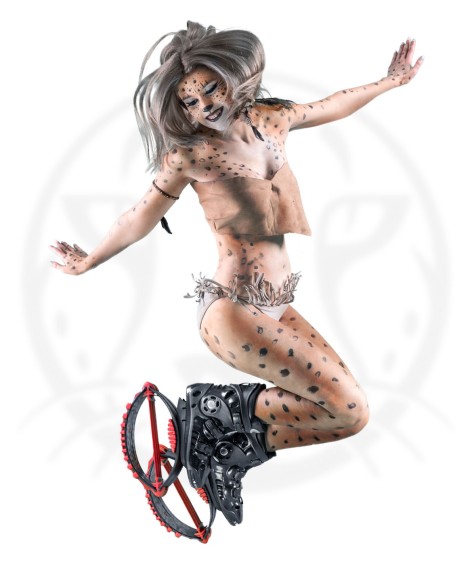
The most important things to start using jumpers
The process to start jumping with jumpers to ensure success is very logical. 1) Get the best Jumper1, 2) Know the most important tips, 3) Know the basics of equipment maintenance.
As we have already said, there is a Jumper1 for everyone. And now we add: it is very easy to find it. First we choose the model that motivates us the most, the one that best represents us (you can also create your own with the Aerower Jumper1+ Custom!). All models are available in all sizes and strengths, so the next step is to choose the right boot and RS for you.
To find out which boot size we need, we only have to check the equivalence between Jumper1 sizes and conventional sizes. What if I have doubts? In that case, it is always better to choose the next size up. But you can be 100% sure by printing out the size chart and putting your bare foot on it. And voilà, you know your Aerower Jumper1 size.

Let's go now to the hardness of the rebound system we need. Although it may seem a bit complicated, it is very similar to knowing what our size is. It is also a system of equivalences, based on your weight and physical condition. Keep your weight in mind, add 5kg if you are a fit person or 10kg if you are very fit. Then, int the Strength customisation chart, check which arc hardness corresponds to you and if you have to adapt the multiband.
Watch the Jumper1 customisation tutorial
The best thing is that we have adapted the buying process to this process of choosing the best jumper for you. Below we explain it to you.
When we use the Jumper1, we are applying a number of variations to our body: cushioned and unstable surface, we add the height and weight of the jumpers, and so on. All of this means a new situation for us and we have to make sure we move properly to ensure safety and maximum performance on every jump.
In every part of the process, from putting on the Jumper1 to taking them off, there are a number of things to keep in mind. They are very simple things that we quickly incorporate and end up doing without realising it. Let's look at the most important things for each part of the process.
1. When we put on the jumpers. We put them on sitting down or from the ground. In either case, we must keep in mind that our legs are now "longer" when we stand up, and use a support point.
2. First jumps. It is important to do a good warm-up and adaptation to the jumpers.
3. While jumping, running, etc. with the jumpers. The main thing is to take care of the technique and maintain a proper, aligned posture.
4. At the end. When we take off the jumpers, our body must adapt again to the situation of not wearing them. we take this into account while stretching.
Of course, it is best to have a Jumple professional to guide us in all our training. But, if you want to practice by yourself, Jumple Academy has prepared all these tips for you.
Know all the tips for jumping with jumpers

Fortunately, the Aerower Jumper1 require very little maintenance and the few things we have to take into account are very easy to do thanks to the manual assembly and disassembly.
If for us the most beneficial thing is that the jumpers are the best adapted to our weight and physical shape, it is also beneficial for them. Otherwise, with a bad configuration, we will be "punishing" the material with every jump. Apart from that, the rest of the maintenance actions are things that we can easily incorporate into our routine when training. We take it step by step.
As soon as we put on our Jumper1, it is advisable to do a few jumps, especially if it is cold. In this way we warm up the material. This step is practically intuitive, we all do it without noticing it.
Then, once the training is over, we have to check that all the parts are in good condition and that they are not damaged in any way. From time to time, especially if we train outdoors, we must remove dirt from the jumpers. Simply take them apart, wipe them with a damp cloth and put them back together again. Afterwards, store them in a place protected from the sun and extreme temperatures.
Finally, there are parts that should be replaced after a certain period of time. Special attention should be paid to the multi-bands, which begin to lose their qualities after approximately 2 years of use.
In the user manual you will find all the maintenance and safety tips. You will receive it together with your Aerower Jumper1+ and you can also consult it whenever you want here.
How can I get the best jumpers for me
And finally, how can I get my hands on the cheapest Aerower Jumper1 in the shortest possible time for me. Aerower has a distribution network that spans over 50 countries. So it is very likely that you will have an official dealer close to you. Through them, you will always get the cheapest and fastest option, because you will save time and shipping costs. If you don't know your nearest dealer yet, you can ask us and we will give you their contact details.
What if I don't have a dealer nearby? We have the solution too! Aerower ships worldwide from its central warehouse in Alicante (Spain). We work with a system that allows us to choose the best shipping company for each case, both in terms of price and security. When you make your purchase at aerower.com/shop, you will see the cost of shipping to the address you have given us. Our logistics system allows us to ship to Spain in 24/72 hours, to the whole of Europe in 3/5 days and to the rest of the world within a maximum of 10 days, whatever the quantity of products.
The purchasing process on our website is very simple. To make it easy for you and give you control, a single process allows you 3 options:
1. The quickest. Choose your favourite colour > Choose your size > Check your weight range > Buy. You will receive your jumpers ready to jump.
2. Mounted, but not adapted. Choose your favourite colour > Choose your size > Check your weight range > Click on "options" > Check them and deactivate the multiband adaptation > Buy. Full control!
3. Do it yourself. Choose your favourite colour > Choose your size > Check your weight range > Click on "options" > Deactivate fitting and adjustment > Buy. Handyman mode ON!
We're ready to jump with you! Are you ready to jump into the evolution?
Ask us if you have questions or if you are interested, as a professional, in increasing your profits by selling Aerower products or teaching Jumple classes.
Facebook – Instagram – YouTube – TikTok – LinkedIn – Telegram Channel

1 Peydró, C. M. (2019, 30 diciembre). What was the original? The history of jumpers or rebound shoes. aerower.com. Recuperado 5 de agosto de 2022, de https://aerower.com/blog/--Cual-fue-el-original--La-historia-de-los-jumpers-o-calzado-de-rebote_94
2 Jumple Academy (Ed.). (2021). Jumple Evolution. Manual de formación (en línea ed., Vol. 1). Aerower Int. Mgt.
3 Aerower Int. Mgt. (s. f.). Technologies developed by Aerower. Over 20 years R&D. aerower.com. Recuperado 5 de agosto de 2022, de https://aerower.com/tech
4 Aguado, X. (1993). Eficacia y técnica deportiva. Análisis del movimiento humano. Barcelona. INDE.
5 Chu, D.A. y Myers, G. (2016). Plyometrics. Barcelona. Paidotribo.
6 Prakash, D. (2018) “Effect of Plyometric training on sports women”. Solapur. Laxmi Book Publications.
7 Howley, E. y Thompson, D. (2017). Fitness Professional´s handbook. Human Kinetics.
8 Andrews, J., Harrelson, G., Wilk, K. (2012). Physical Rehabilitation of the injured athlete. Elsevier.
9 Shiner, J., Bishop, P., Cosgarea, A. (2005). Integrating Low-Intensity Plyometrics into Strength and Conditioning Programs. Strength and Contioning Journal. December 2005. Volume 27, Number 6, pages 10–20
10 Jensen, R. (2010). “Ground reaction forces of variations of plyometric exercises on hard surfaces, padded surfaces and water”. In Proceedings of the XXVIII Conference of the International Society of Biomechanics in Sports 2010; 533-536.
11 Bustos, A. y Alakhdar, M. (2018) Estudios de las jumpers como posible herramienta en fisioterapia. THERAPEÍA 10 [Julio 2018], 75-91, ISSN: 1889-6111
12 Louder, T. J., Searle, C. J., & Bressel, E. (2016). Mechanical parameters and flight phase characteristics in aquatic plyometric jumping. Sports biomechanics, 15(3), 342–356. https://doi.org/10.1080/14763141.2016.1162840
13 Ramírez, J., Argüello, Y., León, H., Porras, K., Riveros, M. (2015) “Comparison of land and aquatic based plyometrics exercises on body composition and explosive strength in postmenopausal women”. GSA. 68TH Annual Scientific meeting 10.13140/RG.2.1.2661.8329.
14 Carter, A. (1979) The miracles of Rebound Exercise. The National Institute of Reboundology & Health, Inc.
15 Walker, M. & Carter, A. (rev 2005) “33 ways the body responds to Rebound Exercise”. https://rebound-air.com/rebounding-benefits/#bennefits. Consultado en 2021.
16 Housh, T., Housh, D., deVries, H. (2017). Applied exercise and sport physiology with labs (4th ed). Routledge.
17 Howley, E. y Thompson, D. (2017). Fitness Professional´s handbook. Human Kinetics.

